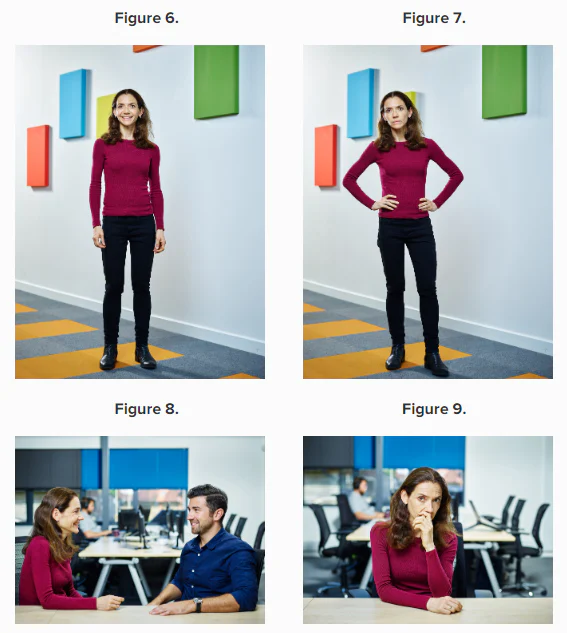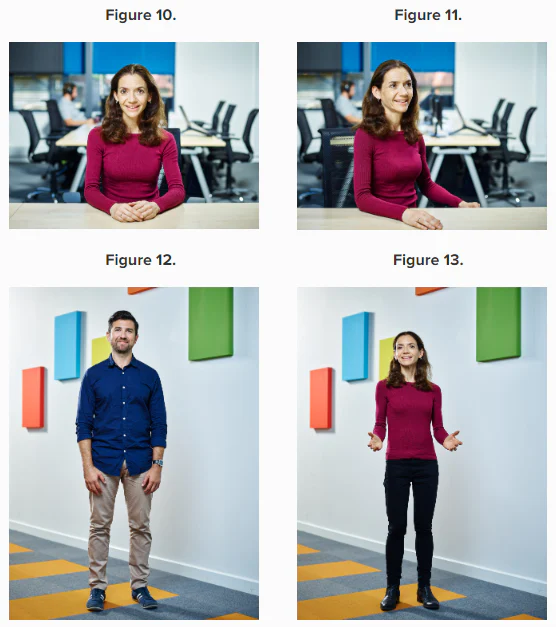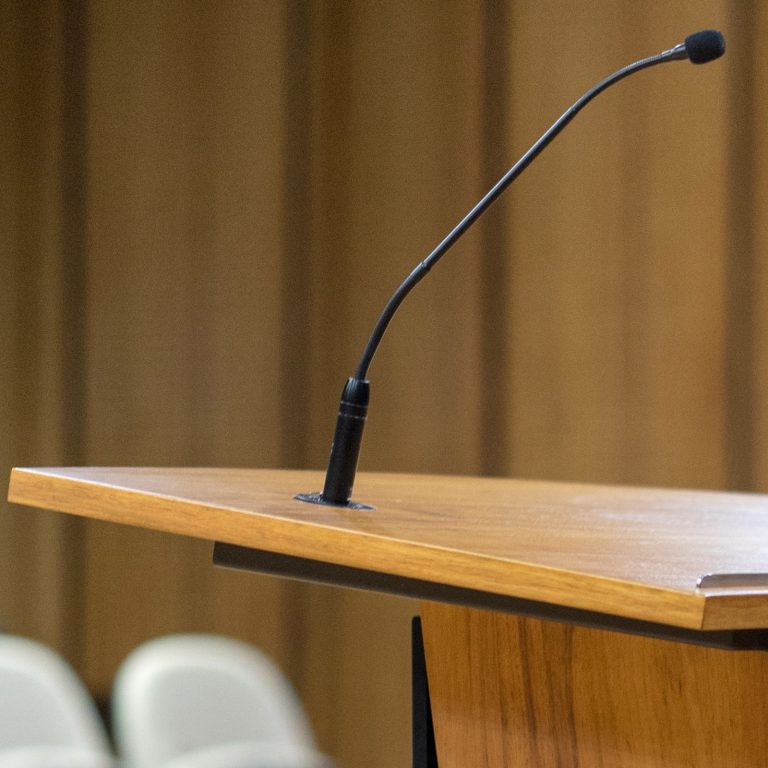Relaxed Body Language
Looking to make a positive first impression? Relax! Your body language has got you covered.
Imagine this: you walk into a room with a relaxed posture, a genuine smile, and open gestures. Instantly, people are drawn to you. That’s the power of relaxed body language.
In this article, we’ll explore the importance of relaxed body language and how it can help you in various aspects of life. So sit back, get comfortable, and let’s dive in!
When it comes to body language, conveying a relaxed demeanor is essential. To appear at ease and approachable, focus on these key elements: maintaining an open posture with relaxed shoulders, making gentle eye contact, and using slow and deliberate movements. Additionally, remember to smile and breathe deeply to calm your body and mind. By implementing these techniques, you can exude an inviting and relaxed body language that will make others feel comfortable in your presence.
Relaxed Body Language – The Power of Nonverbal Communication
Understanding the Importance of Relaxed Body Language
Relaxed body language is a form of nonverbal communication that conveys comfort, openness, and approachability. It plays a crucial role in our daily interactions, whether in personal relationships or professional settings. By consciously adopting relaxed body language, individuals can build trust, establish rapport, and improve their overall communication skills. This article will explore the various aspects of relaxed body language and provide valuable insights to help you master this essential skill.
The Benefits of Relaxed Body Language
Relaxed body language offers numerous benefits in both professional and personal contexts. First and foremost, it enhances your overall likeability. When you appear relaxed, people feel more comfortable around you and are more likely to engage in open and honest communication. Secondly, relaxed body language helps to establish trust. When others perceive you as calm and composed, they are more likely to trust your words and actions. Lastly, adopting relaxed body language can help reduce tension and stress, allowing you to navigate difficult situations with greater ease and confidence.
The Power of Good Posture
Good posture is a fundamental element of relaxed body language. When you stand or sit up straight with your shoulders back and your head held high, you convey an air of confidence and self-assurance. Not only does good posture make you look more attractive and approachable, but it also improves your breathing and bodily functions. Slouching, on the other hand, signals insecurity and can lead to physical discomfort or pain. By practicing good posture, you not only improve your body language but also enhance your overall well-being.
One excellent tip to improve your posture is to visualize yourself as a puppet being guided by a string attached to the top of your head. Imagine the string gently pulling your spine upwards, aligning all the vertebrae. This mental image can help you maintain good posture naturally and effortlessly throughout the day. Additionally, incorporating regular exercise, such as yoga or Pilates, into your routine can strengthen your core muscles and improve your posture over time.
Another aspect to consider is your posture during seated activities like working at a desk or attending meetings. Make sure your chair provides adequate support for your back, and adjust the height and position of your screen to maintain proper alignment. Taking regular breaks to stretch and move around can also prevent stiffness and help you maintain good posture for longer periods.
Facial Expressions and Eye Contact
Facial expressions and eye contact are crucial components of relaxed body language. Your face is a powerful communicator, capable of conveying an array of emotions and intentions. To appear relaxed and approachable, practice maintaining a slight smile and relaxed facial muscles. Avoid frowning or furrowing your brow, as these expressions can be perceived as signs of stress or discomfort.
Moreover, establishing and maintaining eye contact is a key aspect of relaxed body language. Eye contact shows that you are present, engaged, and interested in the conversation. However, it is important to strike a balance and not overdo it, as constant or intense eye contact can be intimidating. Aim to maintain eye contact for about 50-60% of the conversation, allowing natural breaks when appropriate.
One helpful tip to improve your eye contact is to focus on the person’s eye color while listening to them. This simple technique can help you stay engaged and attentive during conversations and make the other person feel heard and valued.
Open and Relaxed Gestures
Gestures play a significant role in nonverbal communication, and adopting open and relaxed gestures can greatly enhance your body language. When you gesture with your palms facing upward, it signifies openness, honesty, and a willingness to listen. Conversely, closed or defensive gestures, such as crossing your arms or clenching your fists, convey a lack of receptiveness and can create barriers in communication.
Allowing your hands to move naturally and using them to accentuate your words can also add to the effectiveness of your communication. However, excessive or exaggerated gestures can become distracting, so it’s important to strike a balance that feels comfortable and authentic to you.
Furthermore, paying attention to other people’s gestures can provide valuable insights into their emotions and intentions. Is their body language congruent with their words? Are they mirroring your gestures? By observing and interpreting these nonverbal cues, you can gain a deeper understanding of the underlying dynamics in a conversation.
The Impact of Voice Tone and Rate
Your vocal tone and rate of speech also contribute to the perception of relaxed body language. When you speak in a calm and steady tone, it puts others at ease and indicates that you are in control of the situation. On the other hand, speaking too fast or in a tense tone can convey nervousness or a lack of confidence.
Pausing at appropriate intervals while speaking gives others time to process the information and provides a sense of thoughtfulness. It also showcases your ability to be comfortable with silence and allows for more effective communication. Incorporating these aspects into your voice will go a long way in enhancing your overall relaxed body language.
Additionally, being mindful of the volume of your voice is important in maintaining a relaxed demeanor. Speaking too softly may make it difficult for others to hear you, while speaking too loudly can come across as aggressive or overbearing. Strive to find a comfortable volume that allows your voice to be heard clearly without overpowering the conversation.
Dressing with Confidence
While clothing may not be a direct form of body language, it does contribute to your overall appearance and how others perceive you. Dressing with confidence can boost your self-esteem and project a relaxed vibe to those around you. When you wear clothes that make you feel comfortable and confident, it positively affects your body language and attitude.
Avoid wearing clothing that is too tight, as it can restrict your movements and create physical discomfort. Opt for loose-fitting or well-tailored outfits that allow you to move freely and confidently. Additionally, wearing colors that complement your complexion and make you feel good can further enhance your relaxed body language. Explore different styles and experiment with outfits that align with your personality and the image you want to portray.
Remember, when you feel good in your own skin, it radiates through your body language and positively impacts your interactions with others.
The Role of Relaxation Techniques
Relaxation techniques can significantly enhance your ability to adopt and maintain relaxed body language. Engaging in activities such as deep breathing exercises, meditation, or progressive muscle relaxation helps reduce anxiety and tension. These techniques promote a state of calmness and help you stay present in the moment, improving your overall body language.
Deep breathing exercises, such as diaphragmatic breathing, can instantly calm your nervous system and relax your body. Practice inhaling deeply through your nose, allowing your belly to expand, and exhaling slowly through your mouth. Incorporating this technique throughout the day, especially before important interactions or presentations, can help you cultivate a relaxed state of mind and body.
Meditation and mindfulness practices train your mind to focus on the present moment and cultivate a state of relaxation. By dedicating a few minutes each day to quiet reflection, you can become more aware of your body, thoughts, and emotions. This increased self-awareness can translate into more authentic and confident body language.
Tips for Maintaining Relaxed Body Language
Here are some additional tips to help you maintain relaxed body language in various situations:
- Practice active listening – Pay attention to the speaker, nod, and maintain eye contact to show your interest.
- Avoid fidgeting – Constantly shifting or fidgeting with your hands can undermine your relaxed body language. If you find yourself becoming restless, try grounding techniques like tapping your thumb to your fingers or pressing your feet firmly onto the ground.
- Be mindful of your surroundings – Take note of the environment and adjust your body language accordingly. For example, in a more formal setting, it may be appropriate to have a slightly more reserved body language than in a casual setting.
- Practice relaxation techniques before challenging situations – Whether it’s a job interview, public speaking engagement, or a difficult conversation, engaging in relaxation techniques beforehand can help you maintain composure and appear more relaxed.
- Observe and learn from others – Pay attention to individuals who exude relaxed body language and take note of their posture, gestures, and overall demeanor. Modeling their behavior can help you incorporate relaxed body language naturally into your interactions.
- Give yourself permission to take breaks – If you start feeling overwhelmed or stressed, give yourself permission to step away briefly to regain your composure. Taking a few deep breaths or stretching can instantly help you relax before returning to the situation.
Mastering Relaxed Body Language – The Key to Effective Communication
Mastering relaxed body language is a valuable skill that can significantly improve your communication and interpersonal relationships. By incorporating the tips and techniques discussed in this article, you can project confidence, establish rapport, and create a positive and comfortable environment for yourself and those around you. Practice consistently and be patient with yourself as you develop this essential skill. Remember, relaxed body language is a powerful tool that can positively impact both your personal and professional life.
Key Takeaways: Relaxed Body Language
- Relaxed body language helps to convey calmness and approachability.
- Keep your shoulders relaxed and avoid tension in your body.
- Slow and steady movements indicate ease and confidence.
- Avoid crossing your arms or legs, as it can be seen as defensive or closed-off.
- Maintaining eye contact shows attentiveness and interest.
Frequently Asked Questions
Relaxed body language contributes to effective communication. It helps create a comfortable and approachable atmosphere, making it easier for people to connect and interact. Here are some common questions about relaxed body language:
1. How can I display relaxed body language?
To display relaxed body language, start by maintaining an open posture. Keep your arms uncrossed and your shoulders relaxed. Make sure to stand or sit upright, but not rigidly. Take deep breaths to release tension and maintain a calm demeanor. Additionally, remember to maintain good eye contact and give others your full attention. All of these actions will help convey a sense of ease and approachability.
It’s important to mention that relaxed body language is not about being lethargic or lackadaisical. It’s about being confident, comfortable, and open to communication.
2. How does relaxed body language affect communication?
Relaxed body language plays a crucial role in effective communication. When you exhibit relaxed body language, you create a positive and welcoming environment. It puts others at ease and encourages them to express themselves openly. Relaxed body language fosters trust, as it signals that you are approachable and receptive to what others have to say.
By displaying relaxed body language, you can enhance your communication skills and build stronger connections with others. It helps in both personal and professional settings, facilitating productive conversations and establishing meaningful relationships.
3. Can relaxed body language be learned?
Yes, relaxed body language can definitely be learned! Like any skill, it takes practice and awareness to develop. Start by observing others who display relaxed body language and try to emulate their behaviors. Pay attention to your own body language and make adjustments as needed. Practice deep breathing techniques to help you relax both your body and mind.
Engaging in activities such as yoga, meditation, or mindfulness exercises can also help promote relaxation and develop a more relaxed body language over time. Remember, it’s a gradual process, and with consistent effort, you can improve your ability to exhibit relaxed body language.
4. How does relaxed body language impact first impressions?
Relaxed body language has a significant impact on first impressions. When you meet someone for the first time, your body language speaks volumes before you even say a word. If you display tense or closed-off body language, it might give the impression that you are unapproachable, uninterested, or even guarded.
On the other hand, relaxed body language can create a positive and welcoming first impression. It conveys that you are confident, open, and receptive to engaging with others. This can make a person feel more comfortable and inclined to have a favorable impression of you from the start.
5. How can relaxed body language improve personal relationships?
Relaxed body language plays a vital role in building and improving personal relationships. When you exhibit relaxed body language, it helps create a safe and non-threatening environment where people feel comfortable opening up and expressing themselves. This fosters trust and deepens the connection with those around you.
By practicing relaxed body language, you can become a better listener and communicator in your personal relationships. It shows that you value and respect the other person’s thoughts and opinions, strengthening the bond between you. Additionally, relaxed body language can diffuse tense situations and promote more constructive conversations and resolutions.
How to Appear Relaxed with Body Language
Summary
When it comes to body language, being relaxed is important. It helps us feel better and make others feel comfortable around us. Relaxing our body language involves things like keeping our shoulders down, maintaining good eye contact, and smiling. These simple actions can make a big difference in how others perceive us and how we feel about ourselves.
Not only does relaxed body language improve our interactions with others, but it can also have positive effects on our own well-being. It can reduce stress, increase confidence, and help us build better relationships. So next time you find yourself feeling tense or nervous, try consciously relaxing your body language. It’s a small change that can make a big impact.


